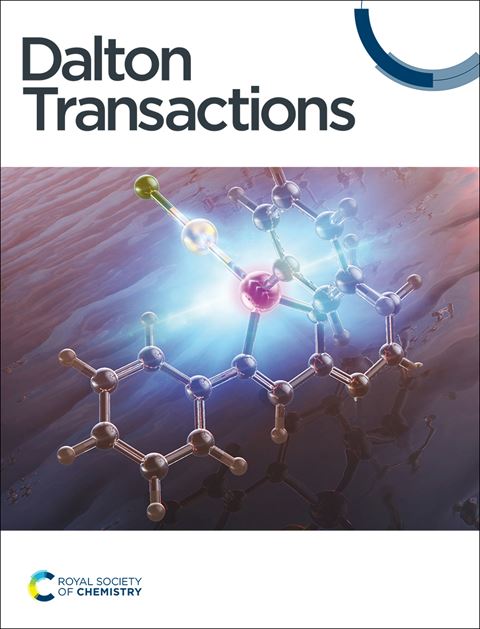Gadolinium-doped carbon nanoparticles: coordination, spectroscopic characterization and magnetic resonance relaxivity
IF 3.5
3区 化学
Q2 CHEMISTRY, INORGANIC & NUCLEAR
引用次数: 0
Abstract
Carbon nanoparticles (CNPs) are attracting great attention as potential multifunctional agents for biomedical applications because of their bright fluorescence, low toxicity and flexibility of the physico-chemical properties. In the present paper, aqueous solutions of CNPs doped with gadolinium (Gd) (Gd-CNPs) in a wide range of Gd-concentration were prepared by hydrothermal synthesis. The role of Gd doping on the optical properties and magnetic resonance (MR) relaxivity of Gd-CNPs was revealed. The Gd content was determined using X-ray fluorescence and spectrophotometry analysis. The composition of surface functional groups and coordination of Gd-ions in Gd-CNPs were established by means of the IR absorption spectroscopy and X-ray photoemission spectroscopy (XPS). The optical properties of Gd-CNPs in aqueous solutions were characterized by means of the UV-visible-near-IR absorption spectroscopy and photoluminescence measurements with different excitation wavelength. The local surroundings of Gd-ions and paramagnetic centers in Gd-CNPs were probed by using the electron paramagnetic resonance (EPR) spectroscopy. The MR proton relaxation measurements in aqueous solutions Gd-CNPs were carried out to determine the role of Gd-concentration for their MR contrasting. The obtained results characterize the coordination of Gd ions in Gd-CNPs and demonstrate new visions for controlling the optical and MR contrast properties of these nanoparticles for biomedical applications.求助全文
约1分钟内获得全文
求助全文
来源期刊

Dalton Transactions
化学-无机化学与核化学
CiteScore
6.60
自引率
7.50%
发文量
1832
审稿时长
1.5 months
期刊介绍:
Dalton Transactions is a journal for all areas of inorganic chemistry, which encompasses the organometallic, bioinorganic and materials chemistry of the elements, with applications including synthesis, catalysis, energy conversion/storage, electrical devices and medicine. Dalton Transactions welcomes high-quality, original submissions in all of these areas and more, where the advancement of knowledge in inorganic chemistry is significant.
 求助内容:
求助内容: 应助结果提醒方式:
应助结果提醒方式:


